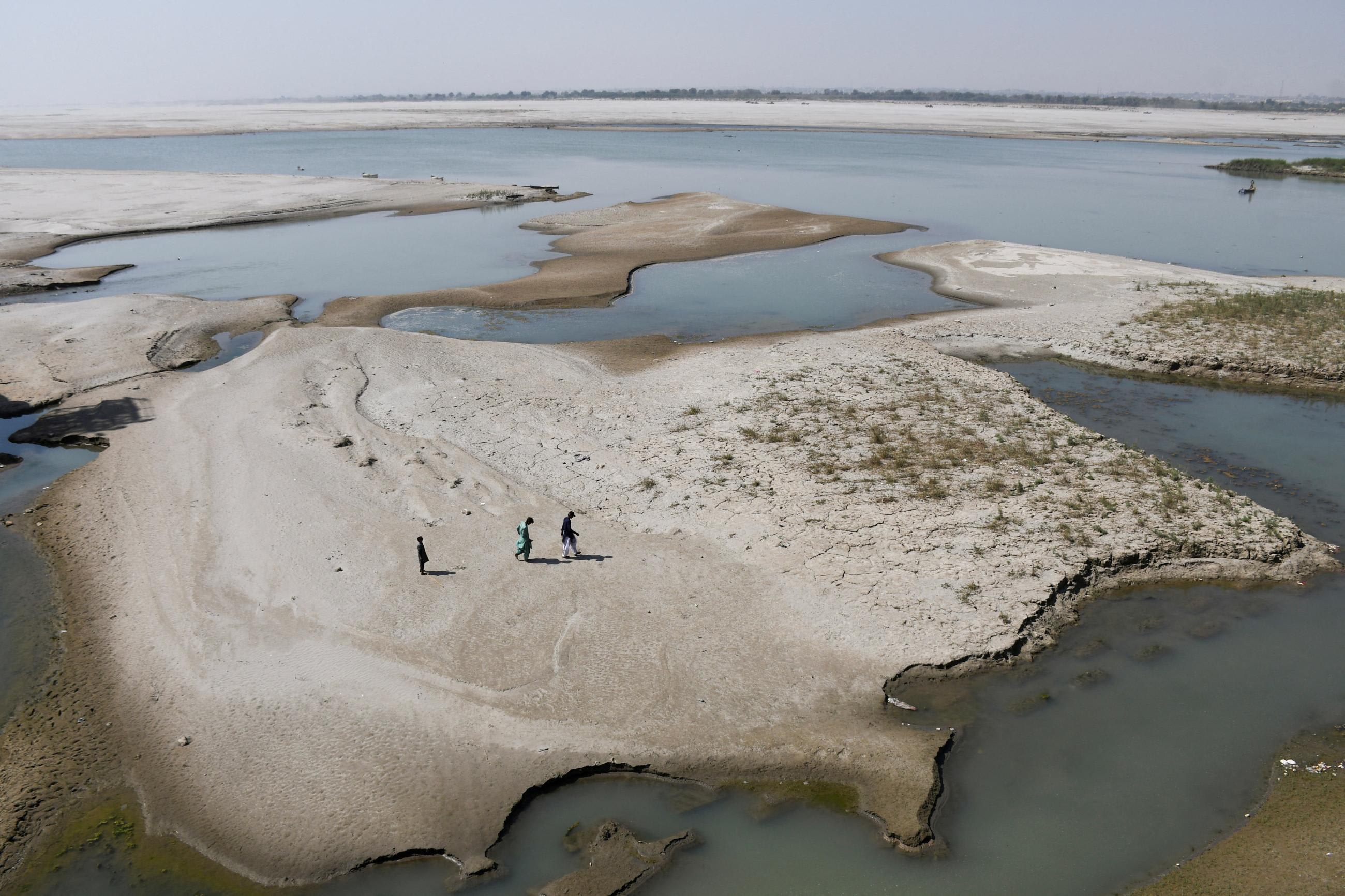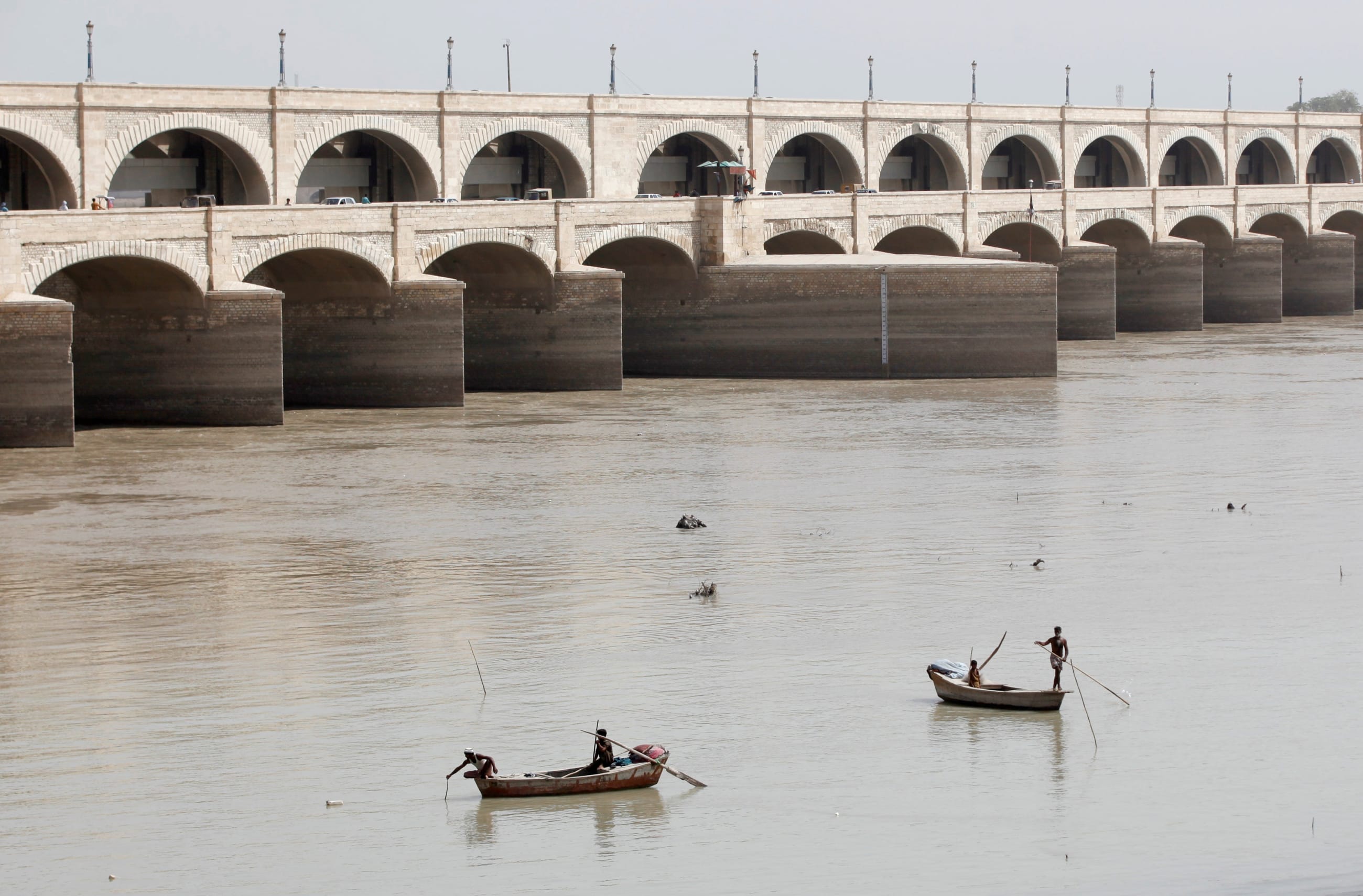On April 23, 2025, a day after militants killed tourists and wounded people in Indian-administered Jammu-Kashmir, India announced its decision to hold the Indus Waters Treaty (IWT) [PDF] "in abeyance with immediate effect, until Pakistan credibly and irrevocable abjures its support for cross-border terrorism." Shortly after this declaration, India suspended the regular exchange of hydrological data—such as flood warnings, river flow, and glacier melt—and halted tours of inspection carried out by the Permanent Indus Commission, the committee established to oversee implementation of the IWT. India then began to move outside the treaty's parameters and restrictions. Contrary to restrictions imposed by the IWT, for example, in May 2025, India flushed the reservoirs of two dams located along the Indus.
One month later, India declared that it has no intention to restore the IWT. Instead, it plans to divert the waters of the Indus River away from Pakistan. Although India does not currently have the infrastructure to accomplish this task, placing the treaty in abeyance has the potential to worsen Pakistan's domestic water shortage and increase its water pollution problem, which could contribute to the spread of waterborne disease, damage its economy, and deteriorate geopolitical relations between the states.
India's decision also challenges a treaty that has been held up as a model for peacefully managing transboundary rivers.
Water Flows
India's decision to suspend the treaty and withhold hydrological data disrupts Pakistan's ability to prepare for floods and droughts, along with its ability to allocate its domestic water supply and the stability of its agricultural sector, harming downstream Pakistan's population and economy.
Although India does not currently have the capacity to stop the flow of water in the western tributaries, it does have the ability to manipulate the flow of water in the rivers by slowing it, potentially inflicting losses on downstream Pakistan. If in the coming years, however, India develops the large-scale infrastructure necessary to halt or significantly limit the flow, it could further challenge Pakistan's use of the tributaries and further restrict its water supply.
Existing water pollution contributes to waterborne diseases, which are the leading cause of death, and childhood stunting in Pakistan
With its semi-arid climate, Pakistan depends heavily on the Indus Basin and a decrease or slowing in the flow will likely have substantial impacts. About 96% of Pakistan's [PDF] average annual renewable water resources (229 billion cubic meters) come from the Indus River. Seasonal variability in the amount of water available in the Indus system is tremendous, and Pakistan's storage facilities do not have capacity to store flood water for an entire year. Siltation further decreases the existing storage capacity of its reservoirs, also challenging its ability to meet annual domestic water needs.
Pakistan also struggles with widespread pollution and contamination of its existing water supply, which undermines its public and environmental health. Although 92% of the population has access to drinking water; only 36% of its water supply is considered safe to drink. Existing water pollution is driven by insufficient water supply, ineffective sanitation systems, untreated industrial effluents, and agricultural runoff. The majority of Pakistan's water (between 80% and 92%), is consumed by the agricultural sector, whose heavy use of pesticides and fertilizer contaminates surface and groundwater supplies. That pollution compounds with the economic setbacks the agricultural sector would experience from reduced water flows in the western tributaries. reduced water flows in the Indus tributaries.
Existing water pollution contributes to waterborne diseases, which are the leading cause of death, and childhood stunting [PDF] in Pakistan. About 80% of diseases—including dysentery, hepatitis, diarrhea, and cancer—in Pakistan are caused by water pollution. A reduction in the flow of the Indus as it enters Pakistan has the potential to further decrease water quality and reduce access to safe water sources. As a result, it will likely affect Pakistan's economic development, human capital, and the quality of life.
Sharing the Indus River
One of the world's largest river systems, the Indus Basin is shared by Afghanistan, China, India, and Pakistan, but is critical for India and Pakistan, where it brings to life northwestern India's and Pakistan's semi-arid lands. The Indus River is also intertwined with a territorial dispute between India and Pakistan, given that several tributaries of the river system flow through Jammu-Kashmir and Azad Kashmir, whose contested control dates to the subcontinent's partition.
After eight years of negotiations mediated by the World Bank, India, Pakistan, and the World Bank signed the IWT in 1960. The treaty allocates the six tributaries of the Indus River system that are shared between India and Pakistan, with the three eastern tributaries to India and the three western tributaries to Pakistan. India is, however, permitted limited consumptive and nonconsumptive uses (such as construction of run-of-the-river hydroelectric projects) of the western tributaries. The treaty also requires both states to share hydrological and meteorological data, which has been a part of the responsibilities of the Permanent Indus Commission.

Despite a history of animosity and conflict, India and Pakistan managed their Indus River system via the IWT for 65 years. This cooperation survived wars, skirmishes, and multiple pauses in diplomatic relations. Recently, the states have expressed dissatisfaction with the cooperation through the agreement, India citing that the IWT cannot effectively address challenges facing the basin, particularly climate change, socioeconomic changes, and environmental problems. India also perceives the IWT as favoring Pakistan in the allocation of the basin's water and as constraining India's ability to develop the western tributaries within its territory. This dissatisfaction is occurring within the context of increasing geopolitical tensions.
Climate Change and the Politicization of the Indus Waters Treaty
Since the early 2000s, factors including population growth, climate change, and water quality problems politicized the IWT. India's development of the western tributaries, where it has 33 hydropower projects in either the planning or construction phase, has also raised concerns from Pakistan. Unlike India, which insists that its hydropower projects should be reviewed individually under the IWT, Pakistan believes these projects should be reviewed collectively. Pakistan fears that when the storage capacities of India's projects are combined, they would increase India's ability to regulate the timing and flow of water entering Pakistan.
Pakistan further disagrees with the design of many of India's upstream projects and whether India follows the treaty's provisions for nonconsumptive use. India feels that Pakistan is obstructing its ability to develop the infrastructure and that Pakistan received a larger quantitative portion of the Indus River's water since together the western tributaries constitute 80% of the river's flow.
Those disagreements should be considered through the broader changes occurring in the basin to understand the context leading to the present situation. Both Pakistan and India are confronting rapid population growth, which is expected to increase water demand. By 2050, Pakistan's population is expected to reach 403 million from its current 240 million, and India's population is expected to reach more than 1.69 billion [PDF]. In the Indus Basin, India's population alone is more than 100 million [PDF]. If current water consumption rates continue, the projected water shortage will be 52% in India's portion of the Indus Basin and 50% in Pakistan's by 2030 [PDF].
Climate change will have a significant impact on the variability of flow, resulting in more severe floods and droughts for downstream Pakistan. By 2047, climate change is also expected to increase domestic water demand in Pakistan between 5% and 15%, as well as agricultural demand, where the Indus is the primary source for Pakistan's agricultural production. In both countries, the Indus River is highly contaminated by industrial effluents, sewage, and agricultural runoff, which is likely to increase due to climate change, population increases, economic growth, and the lack of a treaty regulating the basin.
Given its design that dates to a half century ago, the IWT is limited in its ability to address the impacts of climate change, population growth, and water quality issues that are plaguing the basin. These factors, along with the increasing geopolitical tensions over the last decade, have led to the more frequent application of the formal dispute resolution process—the current arbitration process that India has declined to participate in—as well as India's multiple calls for renegotiating the IWT in 2021, 2023, and 2024. Because of these tensions, India has refused to participate in the Permanent Indus Commission's meetings since 2023. The treaty's politicization culminated in India's April 2025 decision to hold the treaty in abeyance.
Subsequent statements made by both states underscore the political tensions surrounding the IWT: "The resulting security uncertainties have directly impeded India's full utilization of its rights under the Treaty," and "Any attempt to stop or divert the flow of water belonging to Pakistan as per the Indus Waters Treaty, and the usurpation of the rights of lower riparian will be considered as an Act of War and responded with full force across the complete spectrum of National Power."
For more than half a century, the IWT has been considered a successful agreement that has enabled cooperation over shared water resources even during times of war between signatory states. India's pivot has increased the potential for conflict over water with Pakistan, and the absence of cooperation could lead to changes in the flow regime that reduce agricultural productivity downstream and exacerbate the impacts of floods and droughts. Given Pakistan's ongoing water quality crisis that threatens the health and well-being of its citizens, any decrease in the flow of the western tributaries is likely to harm Pakistan's human capital and economic stability.
Through transboundary water cooperation, states can develop mutual benefits across the basin that extend beyond what can be derived from unilateral action. Putting the IWT in abeyance decreases potential mutual benefits that are available to both states and increases the likelihood of loss and harm within the basin.













